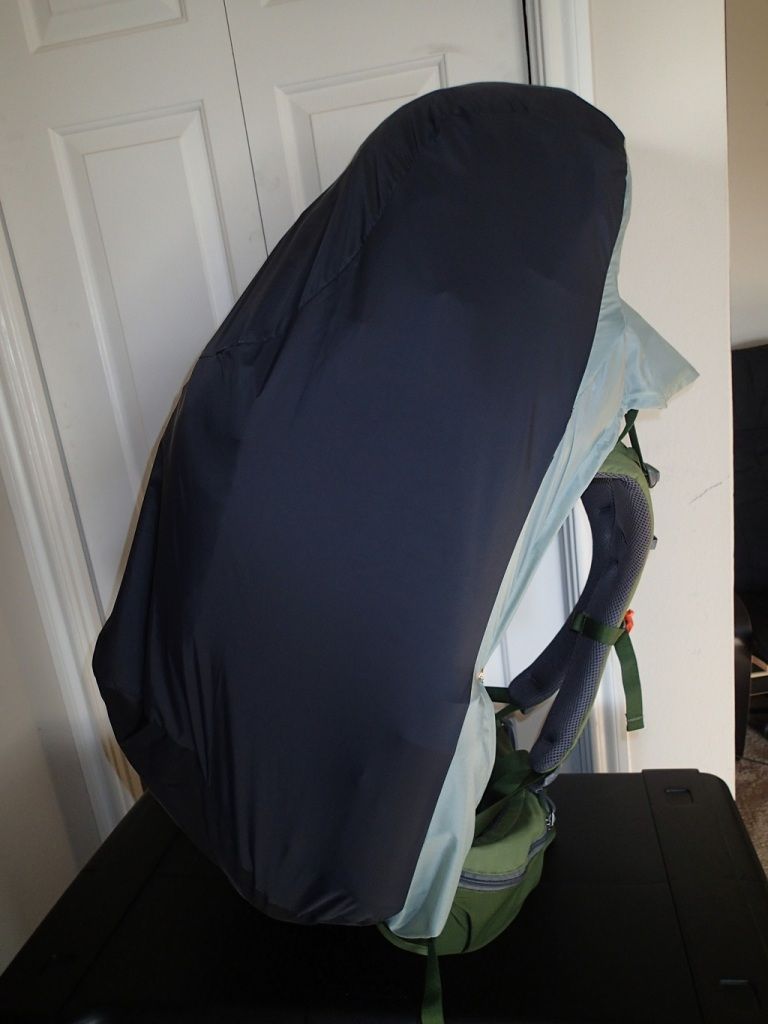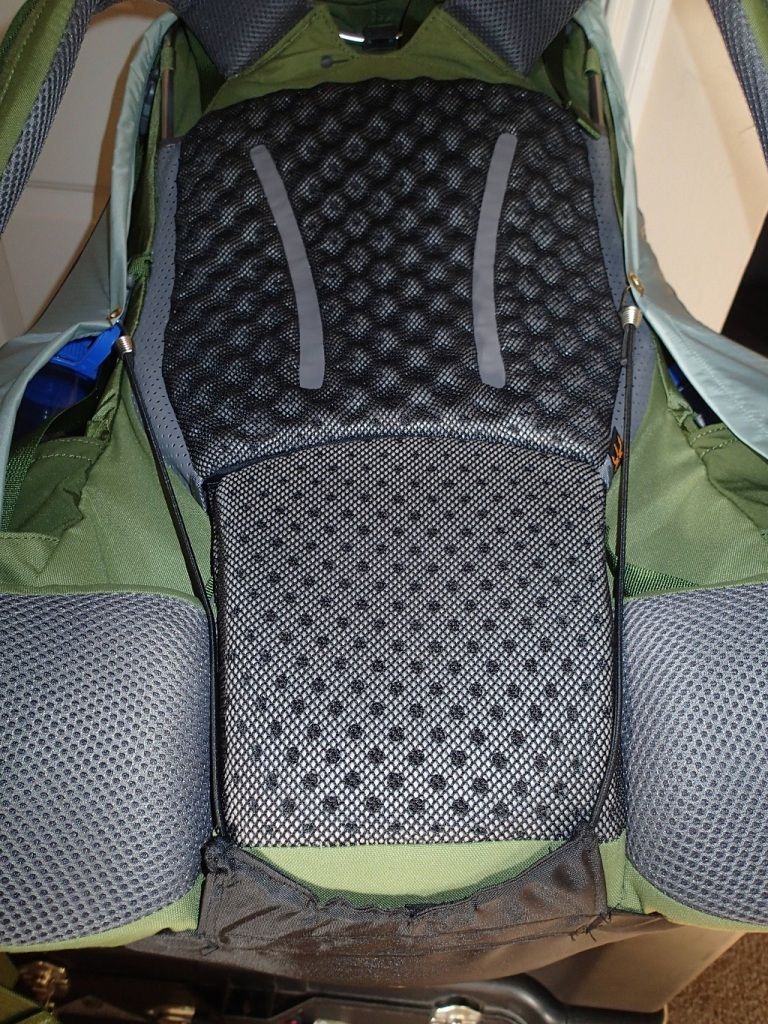I recently upgraded my 65L REI Ridgeline pack to the ginormous XT 85L. I wanted a pack cover that would be capable of accomodating my personal vision of this pack's loadout.
At first, I checked out one of REI's "Ducks Back" pack covers, like the one I'd used on my Ridgeline, but I wasn't impressed with the sturdiness of the bottom fabric panel. My heavy pack would make mince-meat out of taffeta in short order if it rested on it directly. It looked like I'd have to pretty much remake the REI cover to suit my needs anyway, so I decided to build a cover from scratch.
I picked up some nifty paper-thin "PU Coated Polyester Taffeta" at the local Joann's, and set to work on design. I wanted a reinforced bottom for the pack to rest upright upon, so I set up the seam design to place a 1ft squar(ish) fabric panel at the bottom. The design was for an "H" shaped fabric panel to cover the entire sides and middle-back of the pack, and two smaller panels to cover the lid and bottom. The edges of the fabric would wrap around the front, stopping at the internal frame. To that edge, I would attach a "skirt" of sil nylon (the PU coated stuff is very grippy) to cover the remaining exposed areas of the pack.
After rough-measuring the panel dimensions, I basted them onto the stuffed pack, using it as "dress form" (for lack of a manly simile). Once the seams were positioned, I trimmed off excess fabric and replaced the basted connections with French seams for a very clean look.
Unlike most (all) pack covers I've used, I decided to use a hook-eyelet method to attach it instead of cinched-down elastic in channels. I've always had issues with the fabric bunching up and binding the elastic in the channels, leading to uneven tension and worn-out elastic. I often have to fiddle with the cable a bit to get the cover back off the pack. Also, on this particular pack, the hip belt attaches at the very bottom of the frame, so there isn't much for the "shower cap" type covers to wrap around.
For my cover, I designed the top of the cover to slide onto the tall floating lid, while cables pull the bottom edge up and grab eyelets on the sides, keeping the bottom of the pack from sliding back. This design makes for a very form-fitting pack cover that fully covers the bottom fabric and still allows me to reach my side-pockets. The tensioned eyelets are just above the pocket openings, so the fabric below (covering the pockets) is somewhat slack. I also left a large allowance at the top to keep water off the upper back while still allowing me to access the carry handle.
I'm not quite done with the cover, though the hardest parts are definitely over. I still need to waterproof the seams (can PU be treated with silicone?) for it to be truly functional.
I also have visions of attaching my fishing rod case, snowshoes, and some other gear to the outside of the cover (since it would be too difficult to stow it inside) on some type of MOLLE straps, or something. This is only possible because the shell is so taught on the pack underneath; no fabric flopping around like on the REI covers I've used. Finally, I will install a clear vinyl pocket at the top of the pack to hold a small solar panel and speaker, so I can have tunes during the mid-day siesta (I'm in Texas, so no hiking around noon) without unpacking anything.
TCB










 Reply With Quote
Reply With Quote
Bookmarks